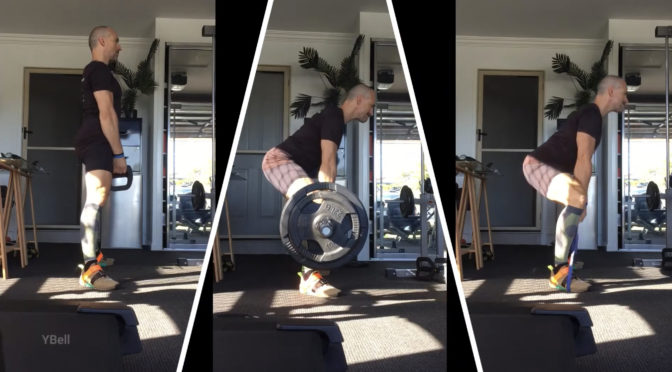The Sumo deadlift (sagittal-frontal planes) is a popular resistance training exercise for strength athletes, powerlifters and experienced gym enthusiasts, but it is not an exercise that you see utilised all that much by older adults or in rehab programs. Interestingly, there is very little research that has explored the benefits of the Sumo deadlift or compared it to the conventional deadlift (sagittal plane) which is now more commonly used across different athletic, rehab and clinical settings.
However, based on the limited research that has been published, the Sumo deadlift appears to be an excellent exercise to simultaneously improve muscle strength in many major muscle groups. When Escamilla et al (2002) compared the Sumo and conventional deadlifts, results showed that electromyographic (EMG) activity (when expressed as a percentage of maximum voluntary isometric contraction) was not significantly different for rectus femoris, lateral hamstring (biceps femoris), medial hamstrings (semitendinosus/semimembranosus), lateral gastrocnemius, hip adductors (adductor longus, adductor magnus, and gracilis), gluteus maximus, L3 paraspinals, T12 paraspinals, middle trapezius, upper trapezius, rectus abdominis and external obliques. Modest but significantly higher muscle activity was reported for the Sumo versus conventional DL for vastus lateralis (48 vs 40), vastus medialis (44 vs 36) and tibialis anterior (18 vs 13). This is interesting as it suggests that when these exercises are performed at moderate submaximal loads, posterior chain muscle activity is no different for both exercises, but there is relatively greater quadriceps muscle activity generated for the Sumo. That being said, load may alter this with Campitelli et al 2018 showing that as load increases for the Sumo DL, greater ankle and knee angles and a more inclined/flexed trunk angle manifested but once load increases such that maximum intensity (100% 1RM) and effort is required, significantly greater joint moment and L4–L5 shear forces were observed for the conventional DL versus Sumo DL (Cholewicki et al 1991).
Whilst I don’t think that this is going to mean too much for athletes [i.e., Sumo or conventional will do the trick], it does provide some choice, with the decision to pick one exercise over the other perhaps more based on preference and comfort than any major differences in training outcomes. In contrast, for rehab purposes, as paraspinal muscle activity was found to be no different for both lifts at submaximal loads, even though there is less hip flexion [i.e., less inclined/flexed trunk angle for the Sumo], the Sumo may provide people that experience CLBP (back pain) and clinicians alike an opportunity to utilise an exercise (at least initially) that may help circumvent the moderate-to-severe fear and anxiety that some have when contemplating or actually bending over or forward (hip and vertebral flexion). This potentially helps or allows 3 key things to be accomplished in a rehab setting: (1) strength improvements in important, large muscle groups; (2) physical conditioning that will facilitate bridging across to other movements that involve greater hip and vertebral flexion, and perhaps most importantly; (3) room to work on and concomitantly address multiple other psychosocial and attitudinal influences that impact a person’s lived experience of back pain.
For local Townsville residents interested in FitGreyStrong’s Exercise Physiology services or exercise programs designed to improve health, physical function and quality of life or to enhance athletic performance, contact FitGreyStrong@outlook.com or phone 0499 846 955 for a confidential discussion.
For other Australian residents or oversees readers interested in our services, please see here.

Love it!